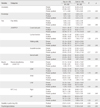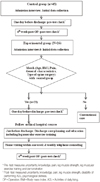1. Choi WJ, Kim DO, Jun MH, Jung JY. A comparative study of the level of pain, knowledge, and uncertainty between pre and post spinal operation. Poster session presented at the International Council of Nurses. 2011. 05. Malta:
5. Fukui M, Chiba K, Kawakami M, KiKuchi S, Konno S, Miyamoto M, et al. JOA back pain evaluation questionnaire(JOABPEQ)/JOA cervical myelopathy evaluation questionnaire (JOACMEQ) the report on the development of revised versions April 16, 2007. J Orthop Sci. 2009. 14(3):348–365.
http://dx.doi.org/10.1007/s00776-009-1337-8.
6. Harvey CV. Spinal surgery patient care. Orthop Nurs. 2005. 24(6):426–440.
7. Jun MH, Choi CR, Lim EJ. Experience of Korean elderly patients undergoing lumbar spinal surgery: Inventive adaptation to postsurgical lives. Poster session presented at the Canadian Association of Neuroscience Nurses 41st annual meeting and scientific sessions. 2010. 06. Quebec, Canada:
8. Jun MH, Jung JY. A follow up study for elderly's disabilities in performing activities of daily life after lumbar spinal surgery. J Korean Acad Soc Nurs Educ. 2010a. 16(1):140–149.
9. Jun MH, Jung JY. Elderly patient guide: Spinal surgery for low back pain. 2010b. Seoul: Daehak Publisher.
10. Jung JY. Effects of legs muscular strengthening exercises on pain, muscular strength of legs, disability of daily living activity, and isoenzyme of patients with lumbar spinal stenosis. 2010. Daejeon: Daejeon University;Unpublished doctoral dissertation.
11. Lee CS, Lee CG. Lumbar spinal disease beyond common sense, Tale about lumbar disc. 2000. Goyang: KSI.
12. Lee JN. The effect and client satisfaction of home care nursing services for the aging: Focused on the poor aged in Yongin. 2007. Youngin: Gangnam University;Unpublished master's thesis.
13. Lee JS. Easy prevention and treatment for lumbar disc. 2004. Seoul: Garim Publisher.
14. McClune A. Predictors of improved quality of life 12 months after lumbar spinal fusion surgery. 2001. Pittsburg: University of Pittsburg;Unpublished doctoral dissertation.
18. Nielsen PR, Jørgensen LD, Dahl B, Pedersen T, Tønnesen H. Prehabilitation and early rehabilitation after spinal surgery: Randomized clinical trial. Clin Rehabil. 2010. 24:137–148.
http://dx.doi.org/10.1177/0269215509347432.
19. Rice R. Home care nursing practice: Concepts and application. 2006. 4th ed. St. Louis: Mosby.
21. Sobottke R, Aghayev E, Roder C, Eysel P, Delank SK, Zweig T. Predictors of surgical, general and follow-up complications in lumbar spinal stenosis relative to patient age as emerged from the spine tango registry. Eur Spine J. 2012. 21(3):411–417.
http://dx.doi.org/10.1007/s00586-011-2016-y.
24. Suri P, Rainville J, Kalichman L, Katz JN. Does this older adult with lower extremity pain have the clinical syndrome of lumbar stenosis? JAMA. 2010. 304(23):2628–2636.
http://dx.doi.org/10.1001/jama.2010.1833.
25. Yu YK, Kim SH. The effect of rehabilitation exercise program according to whether or not operation of Lumbar in patients with Low back pain. Exerc Sci. 2006. 15(4):275–282.







 PDF
PDF ePub
ePub Citation
Citation Print
Print




 XML Download
XML Download